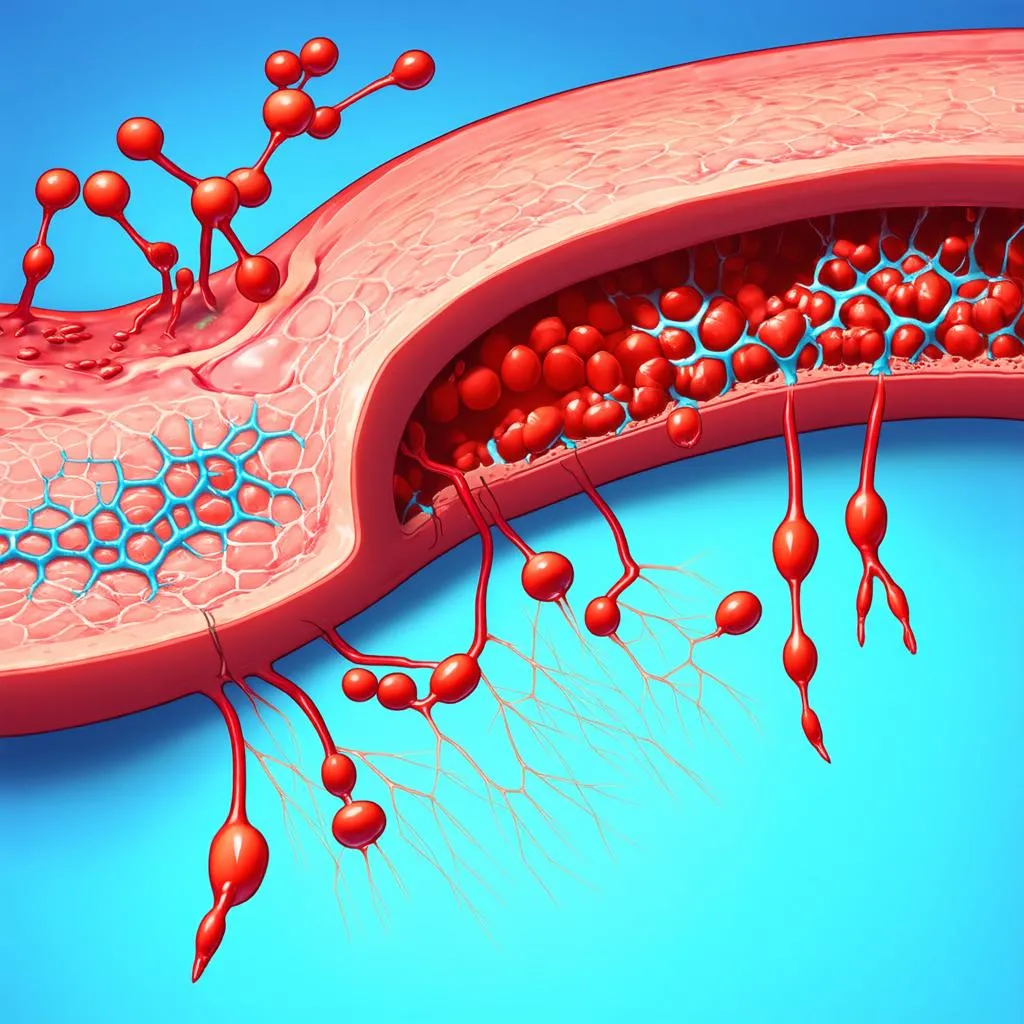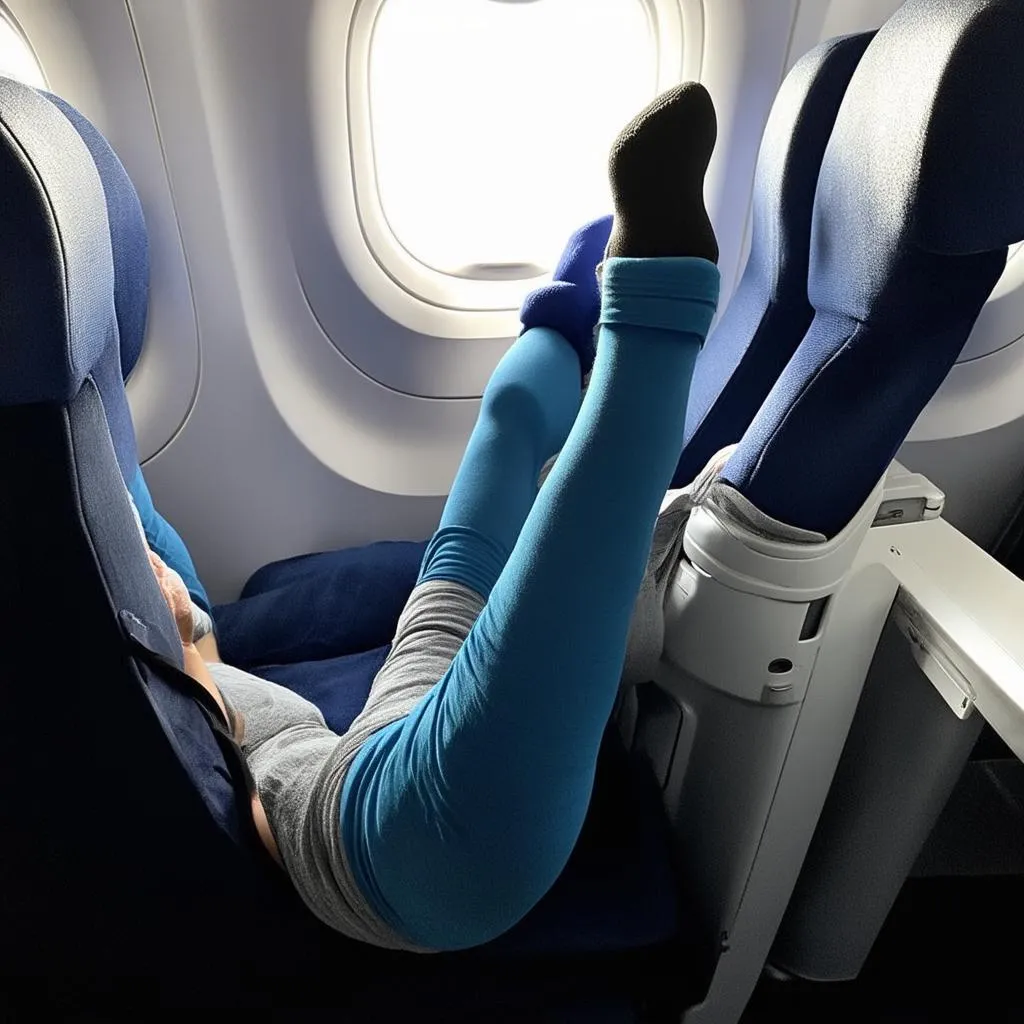Have you ever been on a long-haul flight, maybe from bustling Hanoi to the serene beaches of Da Nang, and felt a little twinge in your leg? It’s easy to dismiss as just a cramped muscle, but it begs the question: could it be something more serious, like a blood clot? More specifically, what is a traveling blood clot called?
Understanding Blood Clots and Their Risks
Before we delve into the specific terminology, let’s understand what we’re dealing with. A blood clot, in its simplest form, is a gel-like mass that forms when your blood solidifies. While blood clotting is a natural and necessary process to prevent excessive bleeding after an injury, problems arise when clots form internally and obstruct blood flow.
The Dangers of a Traveling Blood Clot
A traveling blood clot, also known as an embolus, is where the real danger lies. This type of clot breaks free from its original location and travels through the bloodstream. Imagine you’re cruising down the Mekong River on a boat tour; an embolus is like a rogue log that can suddenly block the waterway, disrupting the entire flow.
What is an Embolus?
An embolus can be particularly dangerous depending on where it lodges itself. If it travels to the lungs, it can cause a pulmonary embolism, leading to chest pain, shortness of breath, and even life-threatening complications. Should it reach the brain, the result could be a stroke, which can impair speech, movement, and other vital functions.
Types of Emboli
While a blood clot is a common type of embolus, other substances can also become lodged in blood vessels and cause harm:
- Air embolus: An air bubble in the bloodstream, potentially caused by medical procedures or injuries.
- Fat embolus: Fat droplets entering the bloodstream, often after a bone fracture.
- Cholesterol embolus: Plaque buildup breaking free from artery walls, commonly associated with atherosclerosis.
Recognizing the Signs and Symptoms
Knowing the signs of a traveling blood clot is crucial for seeking timely medical attention. Symptoms can vary depending on the location of the blockage, but some common red flags include:
- Sudden shortness of breath
- Chest pain
- Coughing up blood
- Pain, swelling, or warmth in the legs or arms
- Sudden weakness or numbness on one side of the body
- Slurred speech
- Sudden vision changes
- Dizziness or fainting
If you experience any of these symptoms, especially after a long journey, surgery, or prolonged immobility, it’s crucial to seek immediate medical attention.
Preventing Blood Clots While Traveling
The good news is that there are steps you can take to minimize your risk of developing blood clots, especially while traveling. Consider these tips on your next adventure:
- Stay hydrated: Drink plenty of water, especially on long flights or car rides.
- Keep moving: Take breaks to walk around and stretch your legs every few hours.
- Wear compression socks: These specialized socks can improve blood flow in your legs.
- Talk to your doctor: If you have any pre-existing conditions that increase your risk of blood clots, consult your doctor before traveling. They may recommend preventative measures like blood thinners.
 Blood Clot Formation
Blood Clot Formation
Travel Smart, Stay Healthy
Remember, your health is paramount, whether you’re exploring the ancient temples of Angkor Wat or trekking through the lush Sapa rice terraces. By understanding the risks of blood clots and taking preventative measures, you can ensure a safe and enjoyable journey. And if you do experience any unusual symptoms, don’t hesitate to seek medical help immediately.
Frequently Asked Questions about Blood Clots and Travel
Q: How long does it take for a blood clot to travel?
A: There’s no definitive answer, as it depends on the size and location of the clot. Some clots may travel quickly, while others may take hours or even days.
Q: Can a blood clot dissolve on its own?
A: Sometimes, small blood clots can dissolve naturally. However, it’s crucial to consult a doctor for proper diagnosis and treatment, as larger clots can be life-threatening.
Q: What are the risk factors for developing blood clots?
A: Factors like prolonged immobility, recent surgery, pregnancy, smoking, obesity, and family history can increase your risk.
Q: Are there any specific foods or supplements that can help prevent blood clots?
A: While no food or supplement can entirely prevent blood clots, maintaining a healthy diet rich in fruits, vegetables, and omega-3 fatty acids can promote overall cardiovascular health.
 Preventing Blood Clots
Preventing Blood Clots
Embark on Your Adventures with Confidence
Travel broadens our horizons and creates lasting memories, but it’s crucial to prioritize our health while exploring the world. By understanding the risks, recognizing the signs, and taking preventative measures, you can travel with confidence and peace of mind. Remember, the team at travelcar.edu.vn is here to provide you with valuable travel information and resources to make your journeys safe and unforgettable.